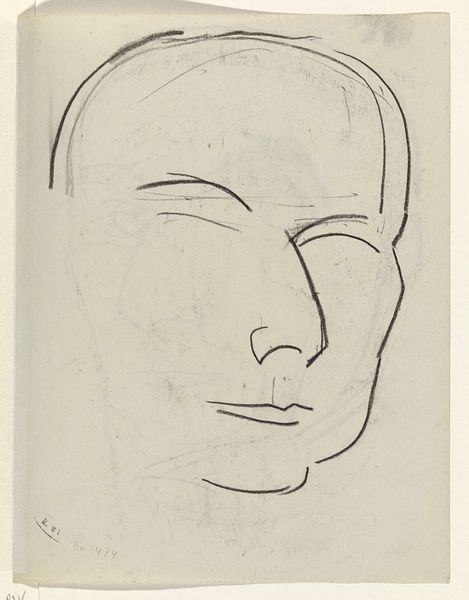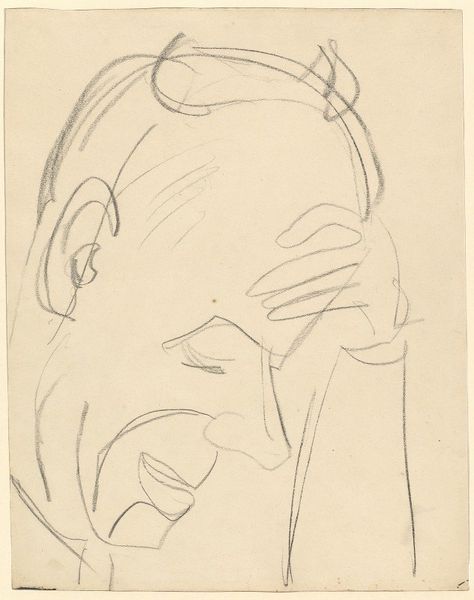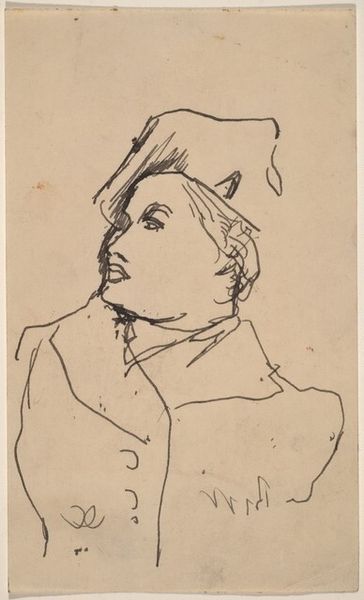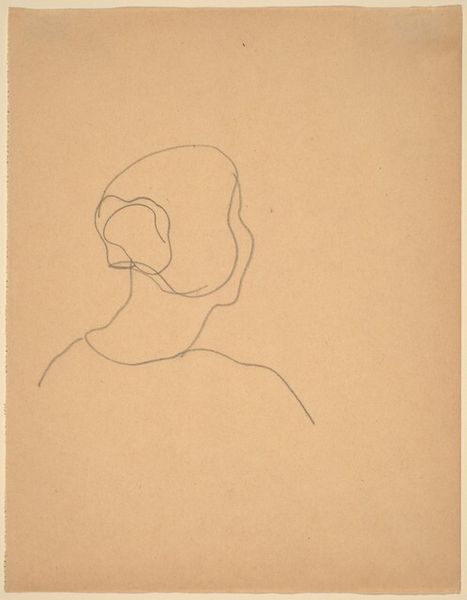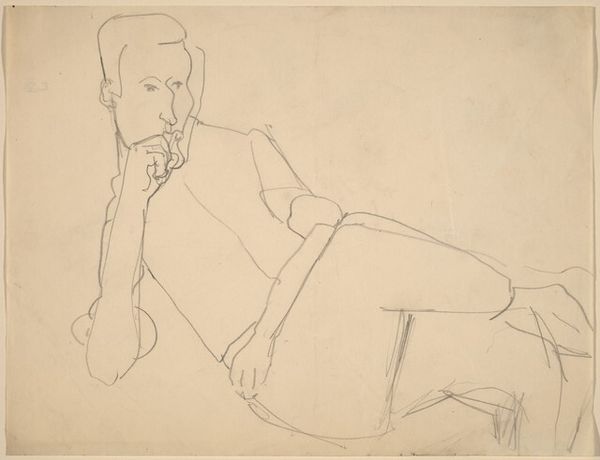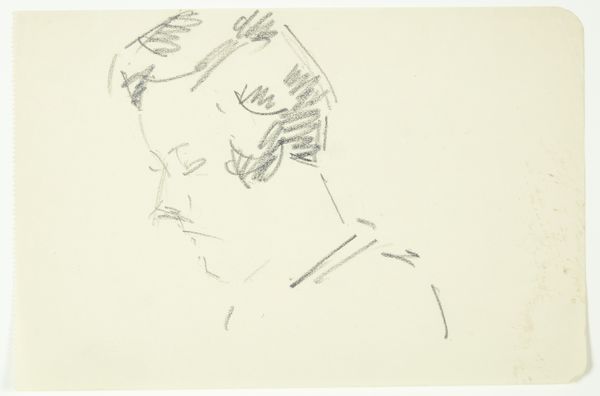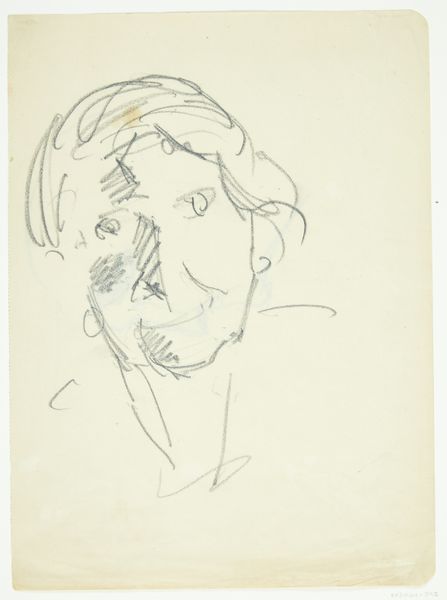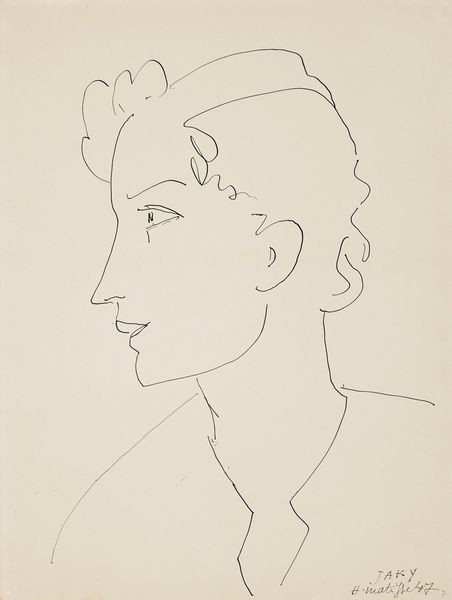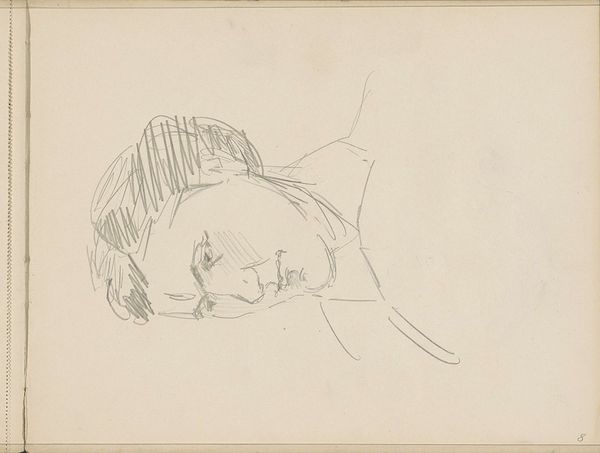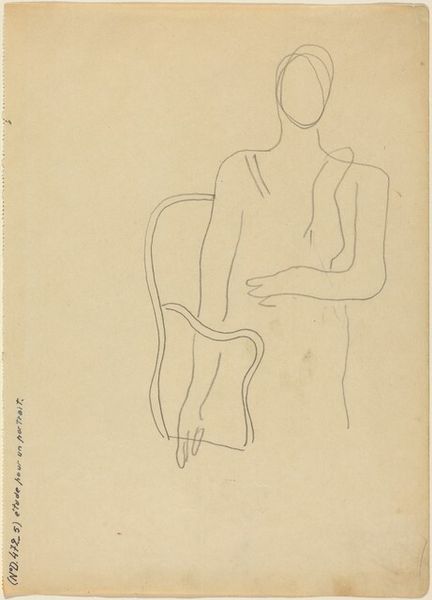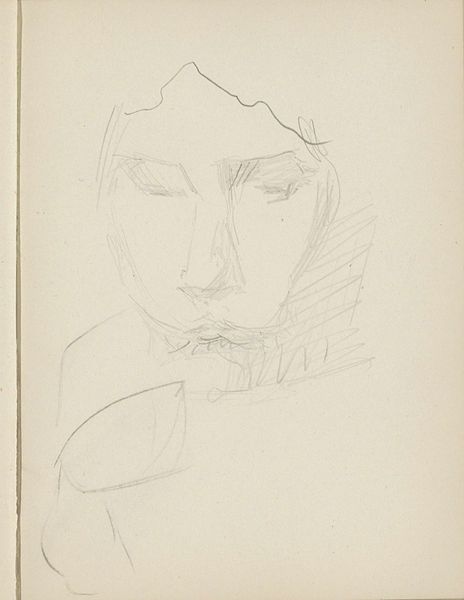
drawing, pencil
#
drawing
#
pencil sketch
#
figuration
#
geometric
#
pencil
#
portrait drawing
#
modernism
Dimensions: sheet: 27.94 × 21.59 cm (11 × 8 1/2 in.)
Copyright: National Gallery of Art: CC0 1.0
Editor: Here we have Milton Avery’s "Marchal E. Landgren," a pencil drawing from around 1950. It’s strikingly simple, almost a caricature, but I find it quite evocative. What's your take on this portrait? Curator: It's a powerful example of modernism's departure from representational accuracy, inviting us to consider the politics of visibility and who gets to be seen, and how. Who was Marchal Landgren in relation to Avery, and what social dynamics might be at play here? Editor: I'm not sure about their relationship. Does the style – the starkness of the lines, the lack of detail – tell us something about that relationship or even about societal power structures? Curator: Precisely. This seemingly simple drawing intersects with broader questions of identity and representation. In whose image are portraits usually drawn? Whose stories are typically told? What do you think Avery's abstraction contributes to or perhaps subverts those norms? Editor: It feels like a levelling. Stripping away details could democratize the image, making it less about the individual and more about a generalized figure. Curator: An interesting reading. And yet, we still know this is "Marchal E. Landgren." How do we reconcile the generalization you observed with the specificity of the title? Perhaps it invites a discussion about the male gaze, who had and has historically the power of depiction? Editor: I hadn’t considered it in terms of the gaze. It gives me a lot to think about in regard to portraiture and power dynamics. Thank you. Curator: It encourages us to consider not just what we see, but also who is doing the seeing, and whose vision is privileged. This piece sparks necessary conversations.
Comments
No comments
Be the first to comment and join the conversation on the ultimate creative platform.
